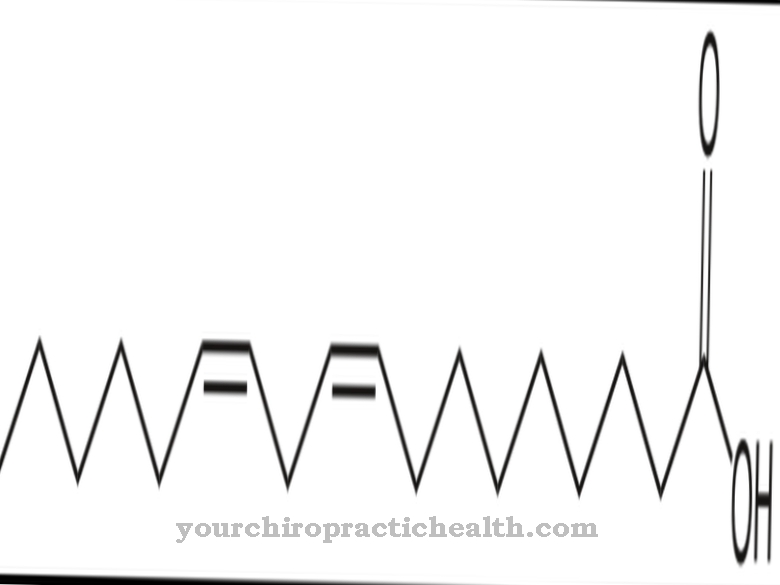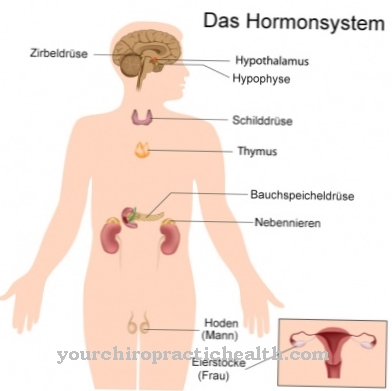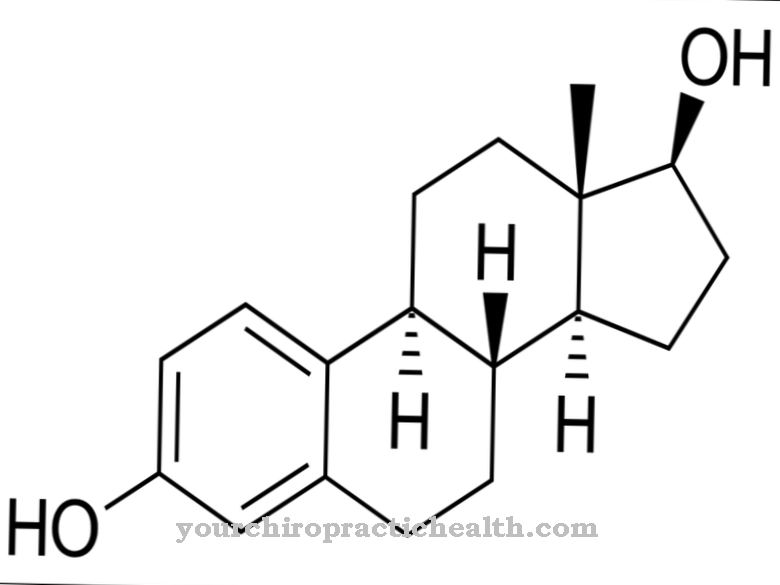Vitamin K is, like vitamin A and vitamins D and E, one of the vitamins soluble in fat. In their function, they are one of the cofactors in the so-called carboxylation reaction, through which various coagulation factors and some factors that inhibit coagulation are activated.
How vitamin K works

Vitamin K thus helps regulate blood clotting. Regardless of this, vitamin K also plays a role in activating the bone protein osteocalcin and is itself a not insignificant factor in photosynthesis.
Vitamin K is divided into different representatives: Vitamin K1, K2 and K3. Vitamin K1 is mainly found in the chloroplasts of all green plants. Vitamin K2, on the other hand, is produced by bacteria in the human intestine, among other things. In contrast to the two previously mentioned, vitamin K3 is produced synthetically.
It can be supplied to the body as a dietary supplement and thus support the metabolism.
meaning
A great advantage of vitamin K is the vitamin's heat stability. As a result, only very small amounts are lost during preparation. However, when exposed to light, vitamin K quickly loses its bioavailability. However, this hardly hampers the ability to absorb vitamin K through food. As a result, it can perform its various tasks in the human body without impairment.
These tasks include processes such as blood clotting, bone metabolism or regulation of cell growth. In the process of blood coagulation, for example, vitamin K is involved in transferring some of the coagulation factors in such a way that they can actually be effective in blood clotting.
In addition to the coagulation factors 2, 7, 9 and 10, vitamin K is also involved in the synthesis of proteins C and S in the liver. Given these numerous tasks in preparing blood clotting, the role of vitamin K can definitely be described as serious. It is no different in the regulation of cell growth.
There is a whole range of receptor-ligand systems that are dependent on the involvement of vitamin K. These systems, in turn, are involved in cell survival, cell metabolism and the transformation and replication of cells.
Occurrence in food
So it is essential that vitamin K is found in numerous foods. It is mainly found in the form of phylloquinone, which is then converted accordingly in the human metabolism. The good thing is that vitamin K is passed on from mother to child during pregnancy.
After birth, it is given in breast milk. As a result, the daily requirement of vitamin K is covered from the start. The average requirement is at least 80 micrograms for men and at least 65 micrograms for women. In comparison, children only need 10 micrograms per kilogram of body weight for the coagulation factor to be activated in their liver.
However, this does not start all of the other functions of vitamin K. If the body is not adequately supplied with vitamin K, this can lead to serious deficiency symptoms. Infants, for example, may have cerebral hemorrhage due to the deficiency. But an oversupply can also lead to serious bleeding in adults. Therefore, the intake of vitamin K should not fall below the daily level, but also not be significantly too high.




.jpg)



















.jpg)



